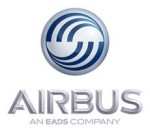Sun, Nov 18, 2012
Efficient And Error-Proof Identification Of Aircraft Components
Airbus has become the first commercial aircraft manufacturer to deploy Radio-Frequency-Identification (RFID) part-marking to aircraft components on all its aircraft families. This innovation, which will bring value-chain visibility, error-proof identification and efficiency savings in component lifecycle management, will be progressively rolled-out in 2013 to all seats and life vests for the A320, A330 and A380 aircraft families.

The annual volume of this RFID part marking extension is estimated to reach 160,000 RFID tags, roughly split across 120,000 life vests and 40,000 seats for these aircraft families. This complements the existing RFID part marking initiative on the A350 XWB which is already underway.
Tom Williams, Airbus’ Executive Vice President, programs says: “Permanent RFID part marking is an answer to the growing need for efficient and error-proof identification of aircraft components throughout their life.” He adds: “The use of RFID part marking will enable the automation of multiple operational processes and is a benefit for all involved in managing the component during its lifecycle: vendor, integrator, airline and MRO.”

The scope of efficiency savings with permanent RFID part marking is substantial. For example, in the past, each one of several hundred life-jackets and seats in the cabin would need to be manually checked and noted, necessitating lengthy manual data entry. But as each Airbus aircraft will soon come pre-equipped with RFID tags on these parts, just one person can read the RFID tags within a few minutes using a lightweight hand-held RFID reader.
The process automatically confirms the presence of each required item, verifies its location and looks-up the associated data about the part (e.g. maintenance history, expiration date etc.). This information can then be used to determine the aircraft configuration and prioritise maintenance planning for items due for inspection, overhaul or replacement.
More News
Light Gun A handheld directional light signaling device which emits a brilliant narrow beam of white, green, or red light as selected by the tower controller. The color and type of>[...]
"The journey to this achievement started nearly a decade ago when a freshly commissioned Gentry, driven by a fascination with new technologies and a desire to contribute significan>[...]
Aero Linx: JAARS, Inc. For decades now, we’ve landed planes on narrow rivers and towering mountains. We’ve outfitted boats and vehicles to reach villages that rarely se>[...]
"Our driven and innovative team of military and civilian Airmen delivers combat power daily, ensuring our nation is ready today and tomorrow." Source: General Duke Richardson, AFMC>[...]
Aircraft Conflict Predicted conflict, within EDST of two aircraft, or between aircraft and airspace. A Red alert is used for conflicts when the predicted minimum separation is 5 na>[...]
 ANN's Daily Aero-Term (04.20.24): Light Gun
ANN's Daily Aero-Term (04.20.24): Light Gun Aero-News: Quote of the Day (04.20.24)
Aero-News: Quote of the Day (04.20.24) ANN's Daily Aero-Linx (04.21.24)
ANN's Daily Aero-Linx (04.21.24) Aero-News: Quote of the Day (04.21.24)
Aero-News: Quote of the Day (04.21.24) ANN's Daily Aero-Term (04.21.24): Aircraft Conflict
ANN's Daily Aero-Term (04.21.24): Aircraft Conflict




